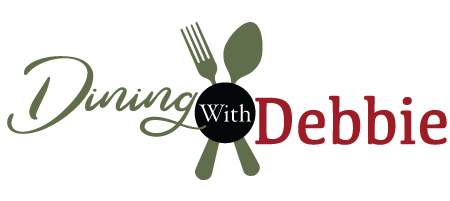#letsbreakbread
I’ve often been asked what one piece of advice I would give to new cooks and what one piece of kitchen equipment I would recommend to have. Well, my answer to both of those would be, “You need these knives.” But, I would further qualify that by saying, “You need to purchase the best of these knives you can possibly afford.” Even if you have to join the Knife-a-Month Club in order to afford really good knives, you should.
High-quality knives are typically made of high carbon stainless steel which helps to keep them sharp. And a sharp knife is an absolute necessity—and a safer one. It’s generally agreed that dull knives are more hazardous to use than sharp ones. While it’s important to have a honing steel, I’m also a firm believer in an electric knife sharpener. Both the steel and the sharpener should be used on a regular basis.
I would also encourage you to “try before you buy.” Any good kitchen supply store will permit you to handle, and possibly actually use, a knife before you purchase it. You need to know that the style of the handle and the weight of the knife are comfortable in your hand.
Because different types and styles of knives differ in how they feel in your hand, I don’t believe in purchasing knife sets. I much prefer buying each knife individually. If a knife is not comfortable for you to use, you won’t use it no matter its quality.
- Do not store knives loose in a drawer. Store your knives in a knife block or drawer equipped with a knife tray. If using a magnetic holder, make sure magnets are strong enough to hold knives securely in place and that the knives are clean. An oily, greasy knife will not adhere properly to a magnetic rack.
What should you look for in a good knife?
1. Precise workmanship
The parts of the knife should be jointlessly assembled meaning there is no seam between bolster and handle. For hygienic reasons, neither the blade nor the handle should show any irregularities or burrs where bacteria could settle.
2. Surface finish
A top quality blade has a finely ground surface that has first been ground and then refined to get its compressed surface.
3. Safety
Be sure the handle and bolster are designed to provide a secure grip from which the hand cannot slip. An ergonomically designed and weighted handle permit safe, tireless use.
4. Cutting edge retention
The cutting edge retention determines the period of use in which the blade retains its cutting properties. A good knife is sharp for a prolonged period.
5. Corrosion resistance
The more finely the surface of the blade is ground or polished, the more resistant to rust it will be.
6. Dishwasher compatibility
While good quality knives are dishwasher safe, it is not recommended. The longevity of your knives is vastly improved with hand washing.
-
BASIC KNIVES YOU REALLY SHOULD HAVE
So what are the basic knives you need in your inventory? Unless you are a professional chef (obviously you don’t need my advice if you are), I recommend that you start with these five which are probably the ones most often used:
- Paring Knife: Use a paring knife for peeling, coring, paring and capping. This is the knife you’ll use to peel apples, potatoes and cap strawberries.
- Carving Knife: This is also referred to as a slicing knife. With a longer, thinner blade, this is the knife you should use to slice/carve meats.

- Chef’s Knife: This is the knife I use more often than any other. Actually, I have several in different lengths. I probably use the 8-inch more frequently, but I use them all.
- Serrated Knife: This one has a long blade with a serrated edge. It’s sometimes referred to as a bread knife since it is the best one to use for slicing loaves of homemade bread. I confess that I use my serrated knife for more than that at times.
- Boning Knife: I hide my boning knives from my husband. Otherwise, they end up in his hunting bags or tackle box. Use this very flexible thin blade with a narrow tip to debone a chicken (yes, you can) or to slice off the silver skin and fat from a rack of ribs.

I won’t even begin to recommend knife brands. There are several really good ones on the market, and you’ll just have to do your research on those. Like I said, however, good knives are not cheap but good knives last a long time if well cared for. I have a couple from my grandmother that are just as good today as the day she got them because they have been kept in good shape.
If I could suggest one thing to new brides and grooms when choosing items for their gift lists, I would suggest good knives. They are going to be far more important than the cutest new fad in placemats or wine glasses. Trust me.
Here’s a handy-dandy guide to even more types of knives:







I have two of my mother-in-law’s paring knives that I love for their performance and their history. Thanks for the good info.
I have one that belonged to my grandmother:)It cuts quite well.